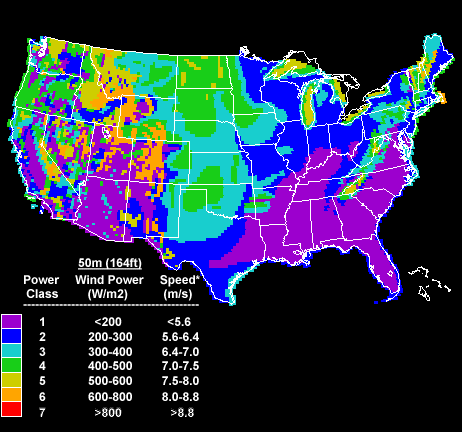Using wind turbines to generate your energy needs is like making energy appear from thin, moving, air. Especially if you are building a new home in a remote location. Wind energy systems may involve a significant initial investment but once you account for the lifetime of reduced or no utility costs it’s a steal. Though the time it takes for you to start making free energy, when your system has paid for itself through your savings that resulted, will be dependent on your system choice, wind resource at your location, electric rates, and how you have your system setup.
Small wind systems can work both on and off the grid depending on your needs, resources, and your desire. An on grid wind turbine system can help reduce your use of public utility-supplied electricity. This way your public electric utility can supply any energy need your turbine cannot supply. On the flip side when your wind turbine produces more energy then your need it can be sold to your utility (depending on state/local regulations). With the interconnections available today the switch can happen automatically. Conditions for a grid connected system are:
- Living in an area with average annual wind speeds of at least 4.5 meters per second (10 miles per hour).
- Grid supplied electricity is expensive in your area (about 10 to 15 cents per kilowatt-hour).
- Local/State requirements for connecting your system to the grid are not too expensive.
- You can legally erect a wind turbine on your property, check local building codes.
- The long-term investment is possible for you.
Stand alone wind systems are designed for homes, farms and/or communities that are located away from utility lines and located in practical conditions. Conditions to look for are:
- Living in an area with average annual wind speeds of at least 4.0 meters per second (9 miles per hour)
- Grid connections are not available or can only be done by expensive extension. Running a power line to a remote site from the utility grid can be prohibitive, it can range from $15,000 to more than $50,000 per mile, depending on your terrain.
- A decided interest in gaining energy independence from the utility
- A desire to reduce the environmental impact of electricity production
- Understanding the intermittent nature of wind power and have a plan for using other resources to meet your power needs during down times.
 6% of the contiguous U.S. land area has the potential to supply more than 1 1/2 times the current demand for electricity in the United States. The estimated wind resource is categorized into power classes of 1 to 7. Each class represents a range of wind power density at at a specific height above the ground. Class 1 is unsuitable for current and future wind technology. Class 2 is only marginally acceptable. Class 3 may be usable, above marginal, with future technology. Class 4 and above are able to use advance wind turbine already being developed today.
6% of the contiguous U.S. land area has the potential to supply more than 1 1/2 times the current demand for electricity in the United States. The estimated wind resource is categorized into power classes of 1 to 7. Each class represents a range of wind power density at at a specific height above the ground. Class 1 is unsuitable for current and future wind technology. Class 2 is only marginally acceptable. Class 3 may be usable, above marginal, with future technology. Class 4 and above are able to use advance wind turbine already being developed today.
Advantages to using this type of alternative energy is that is is a clean, renewable fuel source. It doesn’t pollute the air like fossil fuels, nor does it produce greenhouse gases which cause acid rain.
Since the US has an abundant supply of wind it cannot be used up. For those who love solar energy this is another way to tap that energy. As wind energy is actually caused by the heating of our atmosphere by the sun along with the rotation of the earth and surface irregularities of the earth.
Wind is also the lowest-priced of the renewable energy technologies that are available today. It only cost between 4 and 6 cents per kilowatt-hour, that of course depends on the particulars of your project. Good luck and who says you can’t get money from thin air!
Picture is courtesy of US Dept of Energy
